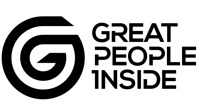Manager vs Leader – a balancing act for effective organisational performance
In the dynamic and ever-evolving landscape of contemporary business, the imperative for balancing manager vs leader roles to enhance their effectiveness has grown considerably.
Gartner research has identified this as the foremost strategic priority for HR in 2023.
The strategic approach for Managers vs Leaders
There is a growing belief that in addition to being more effective, managers and leaders also need to model and epitomise a more humane approach, characterised by:
- heightened empathy,
- effective communication, and
- a dedicated focus on fostering robust relationships with their employees.
The significance of this belief stems from the fact that embracing these aspects greatly facilitates cultivating a positive and productive workplace culture. When there’s a balance between acting in a manager vs a leader role and connecting with their employees personally, it fosters a sense of mutual respect and trust. This, in turn, can lead to:
- better morale
- increased employee engagement
- higher levels of job satisfaction
Most agree that when employees feel like their manager or leader genuinely cares about them and their success, they are more likely to be inspired to exert increased effort and achieve peak performance. Building strong relationships with employees through balancing managerial and leadership roles can also provide more targeted and personalised support to help employees overcome challenges and achieve their goals.
The problem, according to Gartner, is that even though:
“HR leaders try to build commitment, courage and confidence in leaders to help them answer the call, ‘human’ leaders remain few and far between. Critical obstacles to success include their own (very human) emotions of doubt, fear and uncertainty”.
What is needed?
Many successful managers are technically outstanding, but sadly, they lack behind when it comes to “softer” skills. They need all the help they can get. For example, help can include practical tools that facilitate the appropriate discussion and development initiatives.
With the recruitment market forecast to remain tight, the role of managers in retaining top talent becomes indispensable. It’s accepted that employees are more likely to stay with a company where they feel valued, respected, and supported. So, by prioritising empathy, communication, and relationship-building, managers can balance their roles, create a more attractive workplace for top performers and foster a stronger sense of loyalty.
To explore our tailored and user-friendly tools designed for each team member, contact us.

